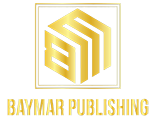Classic book publishing houses are cornerstones in the often-changing field of Canadian literature, helping to shape the literary identity of the country. These esteemed organizations, often referred to as Traditional book publishing companies, are vital to the development and promotion of writers, the preservation of cultural legacy, and the continuation of the age-old skill of book production. Let’s take a tour around the halls of some of Canada’s top conventional book publishing houses to learn more about their backgrounds, accomplishments, and unwavering dedication to the craft of storytelling. Explore the rich tapestry of Canadian literature through the lens of these Traditional book publishing companies.
The Historical Tapestry: Traditional Book Publishing in Canada
Understanding the background of conventional book publishing in Canada is crucial before digging into the biographies of individual publishers. This industry’s deep origins are a reflection of the country’s evolving literary traditions as well as its wide range of cultural influences. The history of conventional book publishing in Canada, from the invention of the first printing press to the current thriving publisher ecosystem, is a monument to the timeless power of storytelling.

Oxford University Press Canada: A Legacy of Academic Excellence
Discussion of traditional book publishing companies is complete with acknowledging Oxford University Press (OUP). In the Canadian literary landscape, OUP stands tall as a bastion of academic publishing. With roots tracing back to the 19th century, OUP Canada has been instrumental in disseminating scholarly works, educational materials, and literary treasures. Its commitment to excellence in content and design has made OUP a cornerstone in the realm of traditional publishing.
McClelland & Stewart: Shaping the Canadian Literary Canon
A name synonymous with Canadian literature, McClelland & Stewart (M&S) has played an integral role in shaping the nation’s literary identity. Founded in 1906, M&S has been a steadfast supporter of Canadian authors, introducing the world to iconic voices such as Margaret Atwood, Leonard Cohen, and Alice Munro. As a traditional publishing powerhouse, M&S continues to champion diverse voices, contributing to the rich tapestry of Canadian storytelling.
Penguin Random House Canada: Merging Tradition with Modernity
Penguin Random House Canada represents the fusion of tradition and innovation in the world of publishing. Born from the merger of two literary giants, Penguin and Random House, this publishing behemoth brings a diverse array of imprints under one roof. With a commitment to storytelling in all its forms, Penguin Random House Canada preserves traditional publishing values while embracing the opportunities presented by the digital age.
Anansi: Small Press, Big Impact
While traditional book publishing in Canada often conjures images of large corporate entities. Smaller independent presses play a crucial role in shaping the literary landscape. House of Anansi Press, founded in 1967, is a prime example. This independent publisher has been a trailblazer, introducing readers to groundbreaking works by authors like Michael Ondaatje and Margaret Atwood. Anansi’s commitment to literary innovation highlights the diversity and dynamism present in traditional Canadian publishing.
The Craftsmanship of Tradition: Upholding Quality and Aesthetics
The detailed artistry put into each publication is one aspect of conventional book production that sets it apart. Traditional book publishers provide special attention to the physical and visual components that turn a book into a treasured relic, from the choice of fine paper to the beauty of the cover design. This dedication to quality workmanship adds to the enduring appeal of physical books in an increasingly digital world while also improving the reading experience.
Nurturing Authors, Preserving Heritage: The Multifaceted Role of Traditional Publishers
In Canada, traditional book publishing houses contribute in many ways to the literary landscape. These publishers look after cultural legacy in addition to providing a platform for writers to tell their tales. Traditional publishers add to the depth and variety of Canadian literature by publishing classic works, elevating Indigenous voices, and examining a range of storytelling approaches.
Embracing the Digital Frontier: Adapting to a Changing Landscape
Leading Canadian publishers are steeped in history, but they have yet to hesitate to seize the opportunities the digital age has to offer. These businesses have been able to reach larger audiences. Investigate new distribution avenues, and adjust to shifting consumer tastes thanks to the use of technology in traditional publishing procedures. The confluence of modernity with tradition is indicative of the Canadian publishing industry’s adaptability and forward-thinkingness.
The Future of Traditional Book Publishing in Canada
It is clear from navigating Canada’s literary landscape of conventional book publishing that these venerable businesses remain strongholds for both readers and authors. They will play a significant role in determining the direction of Canadian literature because of their commitment to maintaining the craft of storytelling. Protecting cultural legacy, and adjusting to a changing business environment. As stories change and voices become more varied, traditional publishers act as defenders of the age-old craft of transforming words into enduring pieces of art.
Trends and Innovations in Traditional Book Publishing
Take a literary journey with us as we investigate the dynamic trends in Canadian traditional book publishing. This section delves into the cutting-edge techniques and ever-changing trends that are reshaping the traditional publishing industry. Learn how these established publishers manage the waves of change while staying rooted in the rich traditions. That shape the book industry, from the incorporation of cutting-edge technology to the investigation of new genres.
Conclusion:
The exploration of traditional book publishing in Canada has been a captivating journey through the rich tapestry of literary history and cultural heritage. As we tread the hallowed halls of publishing giants such as Oxford University Press Canada. McClelland & Stewart, Penguin Random House Canada, and the trailblazing House of Anansi Press. It becomes evident that these venerable institutions are not merely publishers but guardians of storytelling traditions. Their commitment to academic excellence, championing diverse voices. Embracing the digital frontier underscores their pivotal role in shaping the nation’s literary identity. The careful craftsmanship invested in each publication, the nurturing of authors. The multifaceted contributions to Canadian literature highlight the enduring significance of traditional book publishing houses.
As we stand at the intersection of tradition and innovation. It is clear that these literary pioneers are not only defenders of the age-old craft. But also pioneers steering the industry toward a dynamic and inclusive future. The trends and innovations observed reflect an industry adapting and evolving while staying true to its foundational values. The journey through the pages of Canadian traditional book publishing leaves us with a profound appreciation for the timeless art of storytelling. It also highlights the enduring legacy crafted by these literary stewards.


